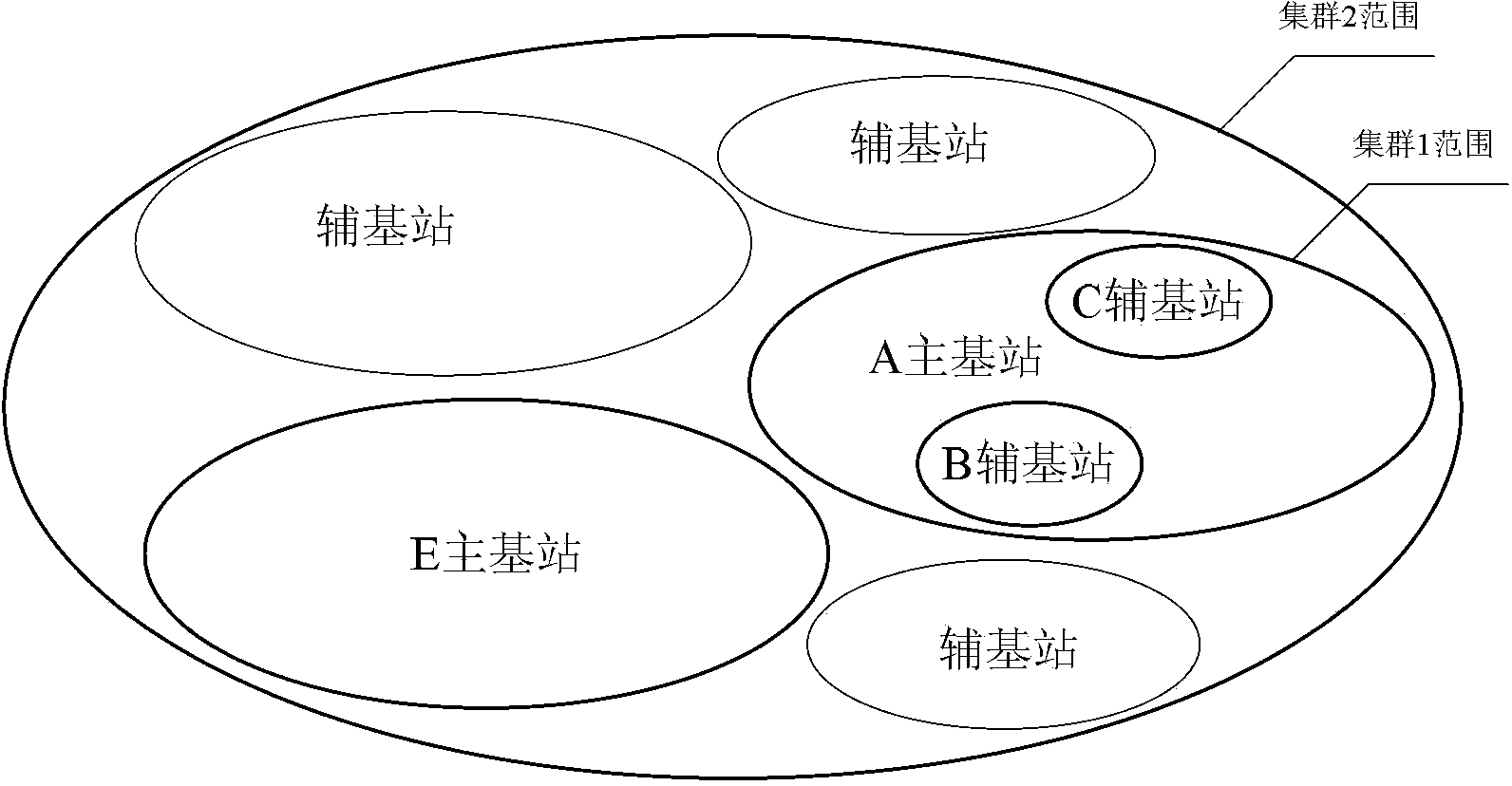Multi-base-station coordinating method and system applied to honeycomb system, and base stations
A cellular system, multi-base station technology, applied in the multi-base station collaborative method, system and base station field, can solve the problems of wasting energy, adverse system interference, etc., and achieve the effects of low cost, reduced system interference, and reduced operation and maintenance costs
- Summary
- Abstract
- Description
- Claims
- Application Information
AI Technical Summary
Problems solved by technology
Method used
Image
Examples
Embodiment 1
[0050] Because the wireless business is dynamic, sometimes the business volume is large, sometimes small, and the overall cost performance of the system is constantly changing. Therefore, the inventors of the present application propose that the relationship between adjacent base stations in adjacent cells can be dynamically adjusted according to changes in actual application scenarios, so that the performance, capacity, interference, and power consumption of a joint system of many base stations can dynamically approach the best ideal value.
[0051] Based on the above idea, this embodiment provides a multi-base station coordination method applied to a cellular system, including the following steps:
[0052] Step 1. When planning the cellular system, a group of adjacent base stations is regarded as a cluster, and a primary base station is configured therefrom, and the rest are configured as secondary base stations, wherein each secondary base station corresponds to a monitor;
...
Embodiment 2
[0070] This embodiment provides a base station, which can be used as the primary base station or the secondary base station in the foregoing embodiment 1, and can be dynamically adjusted specifically. The base station at least includes a transceiver unit and a main processor unit.
[0071] A transceiver unit for receiving traffic reported by other base stations;
[0072] The main processor unit, when the base station is the main base station, determines that the received service volume reported by other secondary base stations is lower than the pre-configured first threshold value, starts the service transfer operation of the secondary base station, and when the service transfer operation is completed Afterwards, the controller corresponding to the secondary base station shuts down the secondary base station.
[0073] On the basis of the above base station, it also includes: a multi-channel gate unit, which selects the secondary base station to be shut down when the base stat...
Embodiment 3
[0080] This embodiment provides a multi-base station coordination system applied to a cellular system, which includes a group of adjacent base stations, one of which is a primary base station, and the rest are secondary base stations. The functions of each part are described below.
[0081] The secondary base station is configured with a monitor, and when the cellular system is operating normally, the monitor updates and counts the traffic volume of the cell area corresponding to the secondary base station in real time, and uploads the statistical traffic volume information to the primary base station;
[0082] The primary base station, when judging that the received service volume reported by the secondary base station is lower than the pre-configured first threshold value, starts the service transfer operation of the secondary base station, and after the service transfer operation is completed, the primary base station passes the secondary base station The corresponding cont...
PUM
 Login to View More
Login to View More Abstract
Description
Claims
Application Information
 Login to View More
Login to View More - R&D
- Intellectual Property
- Life Sciences
- Materials
- Tech Scout
- Unparalleled Data Quality
- Higher Quality Content
- 60% Fewer Hallucinations
Browse by: Latest US Patents, China's latest patents, Technical Efficacy Thesaurus, Application Domain, Technology Topic, Popular Technical Reports.
© 2025 PatSnap. All rights reserved.Legal|Privacy policy|Modern Slavery Act Transparency Statement|Sitemap|About US| Contact US: help@patsnap.com



